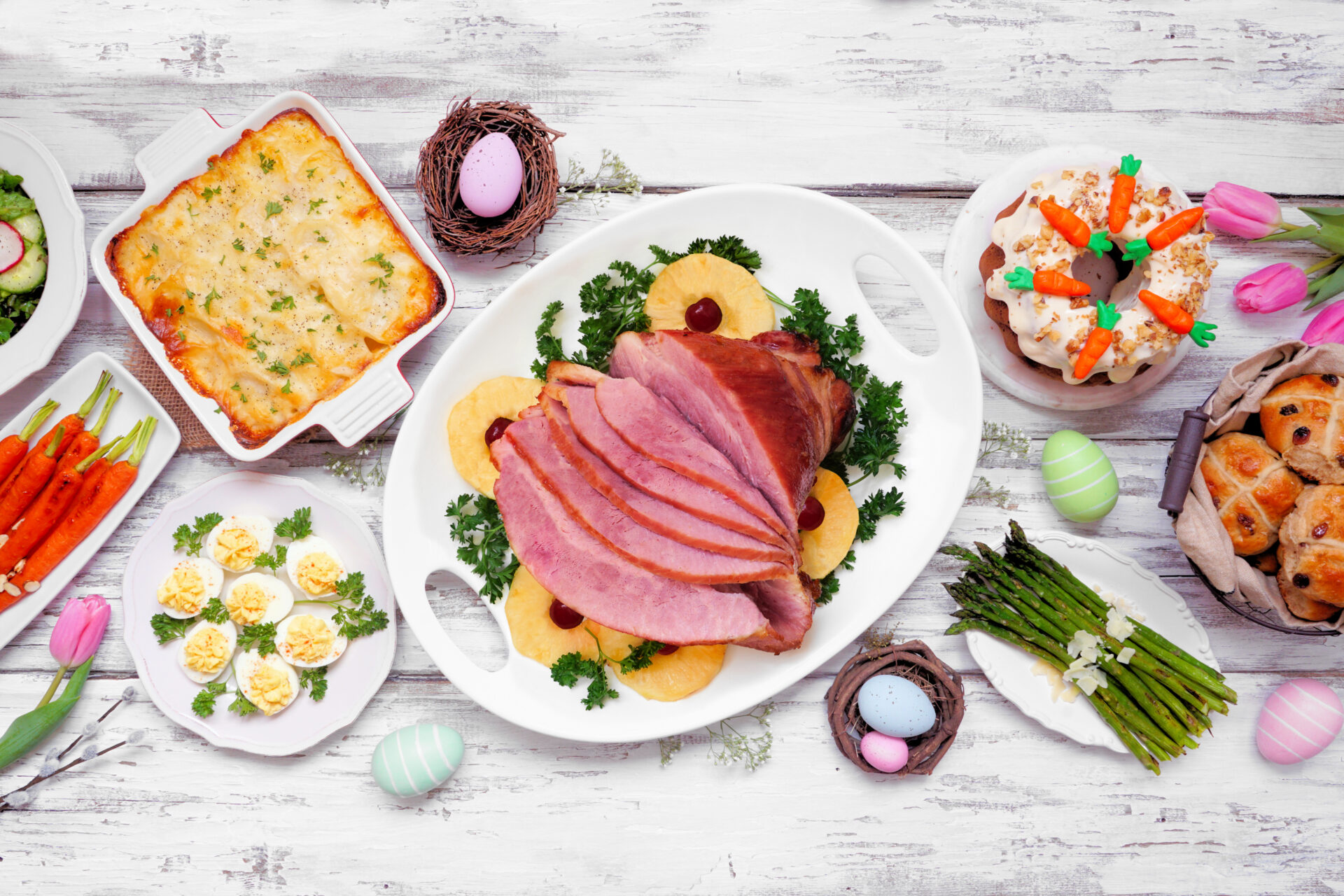
As spring blooms and Easter approaches, families around the world prepare for a feast, many of them centered around a succulent ham. The tradition of serving ham as the main dish for Easter celebrations is deeply rooted in history, dating back centuries. Today, we’ll delve into the origins of this tradition, explore the benefits of consuming ham, distinguish between spiral cut and regular ham, offer tips for selecting the perfect ham, and provide guidance on cooking and carving this beloved centerpiece.
The Origins of Easter Ham Tradition:
The tradition of serving ham on Easter can be traced back to ancient pagan celebrations, where the pig symbolized fertility and renewal. With the arrival of Christianity, the tradition evolved, incorporating the symbolism of the Easter season into the meal. In medieval times, the practice of slaughtering pigs in the fall and curing the meat throughout the winter led to a surplus of cured hams just in time for Easter, making it a practical choice for the holiday feast. Over time, the tradition has persisted, becoming a cherished part of Easter gatherings in many cultures.
Benefits of Eating Ham:
While we’ve been told for decades to limit ham for its high salt content, ham actually offers several nutritional benefits. It is an excellent source of high-quality protein, essential for muscle repair and growth. Additionally, ham provides essential vitamins and minerals, including B vitamins, zinc, and phosphorus.
Spiral Cut vs. Regular Ham:
When you’re picking out your Easter ham, you may come across lots of options, the two most common being spiral cut and regular hams. The primary difference between spiral cut and regular lies in the way they are sliced. Spiral cut hams have been pre-sliced in a continuous spiral pattern around the bone, making them convenient to serve and carve. Regular hams, on the other hand, require carving and slicing by hand. Spiral-cut hams do lend themselves to being overcooked more easily because it’s easier for the heat of the oven to penetrate, but they also are easier to carve and serve to it comes down to personal preference.
Tips for Picking Out the Perfect Ham:
Selecting the perfect ham for your Easter feast requires some consideration. Here are some tips to help you make the right choice:
- Consider the Size: Determine how many guests you’ll be serving and choose a ham size accordingly. Aim for around ¾ to 1 pound of ham per person.
- Inspect the Appearance: Look for a ham with a firm, pinkish-red color and minimal fat. Avoid hams with an excessively salty or overly processed appearance.
- Check the Label: Opt for hams labeled “fully cooked” or “partially cooked” for convenience and ease of preparation. Additionally, look for hams that are free of added nitrates and preservatives if you want a healthier option.
- Choose the Right Cut: Decide whether you prefer bone-in or boneless ham, keeping in mind that bone-in hams typically offer more flavor.
- Consider Flavorings: Some hams come pre-glazed or seasoned, while others are sold plain. Choose a flavor profile that complements your tastes and preferences.
How to Cook and Carve Easter Ham:
Cooking and carving a ham may seem daunting, but with the right techniques, it can be a straightforward process. Here’s a step-by-step guide:
- Preparation: Preheat your oven according to the instructions provided on the ham packaging. If your ham is frozen, allow it to thaw in the refrigerator for several days prior to cooking.
- Seasoning: If your ham isn’t pre-seasoned, you can create a simple glaze using ingredients like brown sugar, honey, mustard, and spices. Apply the glaze evenly over the surface of the ham.
- Cooking: Place the ham in a roasting pan, tent it with foil, and roast it in the oven until heated through, following the recommended cooking times based on the ham’s weight. For spiral cut hams, simply follow the instructions provided on the packaging.
- Resting: Once cooked, allow the ham to rest for 10-15 minutes before carving to allow the juices to redistribute.
- Carving: To carve a spiral cut ham, start by slicing along the bone, following the natural lines of the spiral. For regular hams, use a sharp carving knife to slice thin, even slices against the grain.
Easter ham holds a special place in the hearts and traditions of families around the world. Its rich history, nutritional benefits, and versatility make it a beloved centerpiece for Easter celebrations. Whether you opt for a spiral cut ham for convenience or prefer the timeless appeal of a regular ham, selecting, cooking, and carving this iconic dish is sure to bring joy and satisfaction to your Easter gathering. So, as you prepare for this year’s festivities, don’t let fear keep you from adding a succulent ham to your menu.
Head over to our Facebook page for more Spring and Easter ideas! Share your favorite Easter traditions and the dishes you make for your family!
Don’t forget to sign up for our newsletter to get priority access for everything The Real Kitchen!
